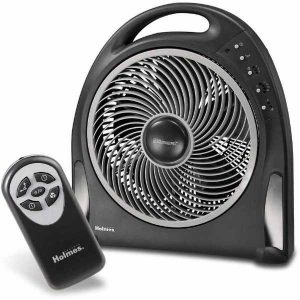Christopher Columbus really is buried in Spain and the Dominican Republic. At least that’s what I tell my students. He may also be buried in Cuba. Christopher Columbus was initially buried in Spain, but his body was dug up and reburied so many times that historians don’t know where it is. His body was dug up and reburied once in Spain before being dug up again and shipped to the Dominican Republic and reburied there. In 1795, France took over the island of Hispaniola, where the Dominican Republic is located. The Spanish dug up what they believed to be Columbus’ bones and shipped them to Havana, Cuba for yet another reburial; however, we are not sure they got the right bones. When Spain lost the Spanish-American War in 1898, they dug up the bones yet again and shipped them back to Spain. Today, there is a magnificent tomb of Christopher Columbus in the Seville Cathedral in Spain, but there is another equally magnificent tomb of Christopher Columbus in a cathedral in Santo Domingo, the capital of the Dominican Republic. Both countries have documents to support their claims that they have Christopher Columbus’ remains. In addition, there is a marked grave in a cemetery in Havana where the Cuban government claims that Christopher Columbus is buried. It is highly unlikely that we will ever know for sure where Christopher Columbus is actually buried. This is a touchy subject in all the countries that claim to have Columbus’ bones.
About Salt Lake City and Salt Water Taffy.
About Salt Lake City and salt water taffy. It is obvious why people mentally associate salt water taffy with Salt Lake City. Salt water taffy is the top selling souvenir at Brigham Young University’s campus store and at tourist hotel gift shops all over the area. Not only do they sell a lot of salt water taffy in Salt Lake City; they also make a lot of salt water taffy in Salt Lake City. The 2 biggest manufacturers of salt water taffy in the U.S. are both located in Salt Lake City: Taffy Town and Sweet’s Candies. Each of these companies make tons of salt water taffy every day.  They make very good salt water taffy in Salt Lake City, but it isn’t made with water from the Great Salt Lake. I know a sales rep for Taffy Town, and he tells me that many of the people who visit his company’s factory store assume that their salt water taffy is made with water from the Great Salt Lake and are shocked when employees at the store tell them the truth, which is that
They make very good salt water taffy in Salt Lake City, but it isn’t made with water from the Great Salt Lake. I know a sales rep for Taffy Town, and he tells me that many of the people who visit his company’s factory store assume that their salt water taffy is made with water from the Great Salt Lake and are shocked when employees at the store tell them the truth, which is that
San Francisco Rental Ad From 1970.
Below is a section of the For Rent ads from the San Francisco Chronicle in 1970. Look at the prices. Although it may seem hard to believe, back in those days, San Francisco and Berkeley were considered cheap places to live, that is, compared to big cities back East like New York and Boston. One of the main reasons why the hippies came to San Francisco and Berkeley in the 1960s was because they could find cheap housing here. Counter-culture people in every generation move to places where they can find cheap housing. Then they move elsewhere when housing gets expensive. That is something that never changes. Tourists, mostly from foreign countries, still go to the Haight Ashbury district in San Francisco expecting to see hippies and ‘flower children’, but there aren’t any. A 1 bedroom apartment in the Haight Ashbury district now rents for $3,000 to $4,000 a month. Of course, a portion of the increase in rents in the Bay Area can be attributed to inflation, but only a portion. When I arrived in Berkeley in 1972, I rented an apartment downtown for $80 a month, and I knew people who were paying much less than that.
What Is A Luxury Apartment in Berkeley?
 I went to campus on Cal Day, April 22. Several of the new apartment houses in Berkeley near campus had booths there. There was one thing that these booths all had in common. They all claimed that they were renting luxury apartments, and only luxury apartments. The word ‘luxury’ was on everything. It was on the sales literature, the promotional giveaways, and the clothes that the sales agents were wearing. See the photo below of a shopping bag that I picked up on Cal Day. I asked a man working at one of these booths: “Your literature says that all your apartments are luxury apartments. What does that mean? I toured your building last week. I walked through a couple of 2 bedroom apartments. (One apartment was $4,500 a month. The other, which had a better view, was $4,800. a month including a parking space). They weren’t very big, and they didn’t seem to have anything luxurious about them, you know, like fine woodwork or marble floors, drapes, etc. In fact, neither of them even had a separate living room. What makes them luxury apartments?” The man working at this booth had an answer for me. I could see that he had been asked this question before. He said: “By luxury, we mean that our apartments are luxury priced.” AHA! So now I know what the word ‘luxury’ means, at least in Berkeley! ‘Luxury’ just means very EXPENSIVE! It tells you nothing about the apartment. Now frankly, I don’t think that ‘expensive’ is a reasonable definition of the word ‘luxury.’ Do you?
I went to campus on Cal Day, April 22. Several of the new apartment houses in Berkeley near campus had booths there. There was one thing that these booths all had in common. They all claimed that they were renting luxury apartments, and only luxury apartments. The word ‘luxury’ was on everything. It was on the sales literature, the promotional giveaways, and the clothes that the sales agents were wearing. See the photo below of a shopping bag that I picked up on Cal Day. I asked a man working at one of these booths: “Your literature says that all your apartments are luxury apartments. What does that mean? I toured your building last week. I walked through a couple of 2 bedroom apartments. (One apartment was $4,500 a month. The other, which had a better view, was $4,800. a month including a parking space). They weren’t very big, and they didn’t seem to have anything luxurious about them, you know, like fine woodwork or marble floors, drapes, etc. In fact, neither of them even had a separate living room. What makes them luxury apartments?” The man working at this booth had an answer for me. I could see that he had been asked this question before. He said: “By luxury, we mean that our apartments are luxury priced.” AHA! So now I know what the word ‘luxury’ means, at least in Berkeley! ‘Luxury’ just means very EXPENSIVE! It tells you nothing about the apartment. Now frankly, I don’t think that ‘expensive’ is a reasonable definition of the word ‘luxury.’ Do you?Berkeley Bans Fur.
 In April, the Berkeley city council passed a law banning the sale of fur clothing. The city council says this law is just symbolic because they claim: “there are no stores in Berkeley that sell fur clothing”. However, that isn’t true! There are lots of stores in Berkeley that sell fur clothing, especially shoe stores. I have been wearing sheepskin moccasin bedroom slippers for years. They sell them at a number of stores in Berkeley. Mine are wool lined inside, like most moccasins. It is now illegal to sell moccasins like these in Berkeley unless you scrape the wool off the sheepskin first, which nobody is going to do. Besides, what the difference? Whether the wool is attached to the sheepskin or not, the sheep it came from is just as dead either way.
In April, the Berkeley city council passed a law banning the sale of fur clothing. The city council says this law is just symbolic because they claim: “there are no stores in Berkeley that sell fur clothing”. However, that isn’t true! There are lots of stores in Berkeley that sell fur clothing, especially shoe stores. I have been wearing sheepskin moccasin bedroom slippers for years. They sell them at a number of stores in Berkeley. Mine are wool lined inside, like most moccasins. It is now illegal to sell moccasins like these in Berkeley unless you scrape the wool off the sheepskin first, which nobody is going to do. Besides, what the difference? Whether the wool is attached to the sheepskin or not, the sheep it came from is just as dead either way.
 Rabbit Foot Keyrings. This is one fur product that has always been a mystery to me. I do not understand the appeal of this product. I sometimes see rabbit foot key rings for sale in stores. Do people really believe that carrying a dead rabbit’s foot in your pocket will bring you good luck? Yes! I once saw a man playing blackjack in Las Vegas, holding a rabbit’s foot in his left hand. When he won a big bet, he kissed the rabbit’s foot! As I left, I wondered: ‘Why would anyone imagine that a rabbit’s foot will bring you good luck?’ Obviously, cutting the feet off a rabbit didn’t bring the rabbit good luck! Well – did it?
Rabbit Foot Keyrings. This is one fur product that has always been a mystery to me. I do not understand the appeal of this product. I sometimes see rabbit foot key rings for sale in stores. Do people really believe that carrying a dead rabbit’s foot in your pocket will bring you good luck? Yes! I once saw a man playing blackjack in Las Vegas, holding a rabbit’s foot in his left hand. When he won a big bet, he kissed the rabbit’s foot! As I left, I wondered: ‘Why would anyone imagine that a rabbit’s foot will bring you good luck?’ Obviously, cutting the feet off a rabbit didn’t bring the rabbit good luck! Well – did it?
 In the late 1800s, sea otters in many places around the world were hunted to extinction for their soft luxurious fur. At the time of the California Gold Rush, it is estimated that there were 20,000 California sea otters, but by 1900, they were all gone. There were no sightings of sea otters in California for decades. They were believed to be extinct. Then in 1938, a small colony of California sea otters was sighted in a remote cove near Big Sur. The California Department of Fish and Wildlife immediately (and wisely) imposed a complete ban on capturing, killing, or harassing sea otters – and enforcing it with patrols. Today, there are several thousand California sea otters along the central and northern coast of the state. Frankly, I am a sucker for sea otters. I can watch sea otters for hours without getting bored. I sometimes see them near Seal Rocks in San Francisco. You can hear sea otters at some distance when they are eating oysters. It is fascinating how they do this. A sea otter will pick up an oyster with one paw and a rock with the other paw and then come to the surface. The otter then rolls over onto his back, places the rock on his stomach and then hits the oyster on the rock until he breaks the shell. It is amazing to me that sea otters figured out how to use rocks as tools to eat oysters. Here is a You Tube video showing a sea otter near Santa Cruz eating clams this way: Sea Otter Eating Clams.
In the late 1800s, sea otters in many places around the world were hunted to extinction for their soft luxurious fur. At the time of the California Gold Rush, it is estimated that there were 20,000 California sea otters, but by 1900, they were all gone. There were no sightings of sea otters in California for decades. They were believed to be extinct. Then in 1938, a small colony of California sea otters was sighted in a remote cove near Big Sur. The California Department of Fish and Wildlife immediately (and wisely) imposed a complete ban on capturing, killing, or harassing sea otters – and enforcing it with patrols. Today, there are several thousand California sea otters along the central and northern coast of the state. Frankly, I am a sucker for sea otters. I can watch sea otters for hours without getting bored. I sometimes see them near Seal Rocks in San Francisco. You can hear sea otters at some distance when they are eating oysters. It is fascinating how they do this. A sea otter will pick up an oyster with one paw and a rock with the other paw and then come to the surface. The otter then rolls over onto his back, places the rock on his stomach and then hits the oyster on the rock until he breaks the shell. It is amazing to me that sea otters figured out how to use rocks as tools to eat oysters. Here is a You Tube video showing a sea otter near Santa Cruz eating clams this way: Sea Otter Eating Clams.Bank Fees You Can Avoid.
ATM Withdrawal Fees. These are less expensive, typically $2 or $3 per transaction, but they can add up. You can avoid these fees by using your own bank’s ATM machines or by using your supermarket’s cash-back feature when you pay with a debit card, which at most banks is also your ATM card.
Gluten-Free Toilet Bowl Cleaner?
I saw this product at Berkeley Bowl. I read the back labels on household chemicals like this. Some toilet bowl cleaners contain ingredients that can damage the plumbing, like hydrochloric acid. This product befuddled me. At the bottom of the back label (below) it says that this product is ‘GLUTEN FREE.’ Now, I don’t doubt that they are telling the truth about this product being gluten free, but what’s the point? Do people drink this stuff? Toilet bowl cleaner isn’t a beverage.
Charles de Gaulle & Donald Trump.
In October of 1962, during the Cuban Missile Crisis, President John F. Kennedy sent former Secretary of State Dean Acheson to Paris to meet with President Charles de Gaulle. De Gaulle had often opposed U.S. foreign policy, and Kennedy wanted a united front against the nuclear missiles in Cuba. At their meeting at the Elysee Palace, Dean Acheson offered to show de Gaulle CIA surveillance photos of the Russian nuclear missile complexes in Cuba. Acheson said: “Here, let me show you the photos.” President de Gaulle waved off Acheson and said: “No. No. No. No. I don’t need to see the photos. The word of the president of the United States is good enough for me.”
Now, I wonder – what world leader today would say the same thing about Donald Trump? “No. No. No. No. I don’t need to see any evidence. The word of President Trump is good enough for me.” Hmmm. Well, who would say that?
How To Avoid Buying Energy Vampires.
An energy vampire is an electrical device that uses electricity while it is turned off. Between 10% and 20% of the average American’s electrical bill goes to pay for energy vampires.
1. Buy appliances that shut themselves off. I have a coffee maker that automatically shuts itself off one hour after it is turned on. Almost all the coffee makers in hotel guest rooms have automatic shutoff timers in them. Hotels buy them to save money on electricity, and more importantly, to reduce the risk of fire. Coffee makers are the cause of a lot of home and office fires. If you leave a coffee maker turned on, eventually the coffee in the carafe will evaporate. After that, the carafe and the heating plate under it will get hotter and hotter. Eventually, coffee maker itself can melt and catch on fire. Coffee makers with automatic shutoff timers in them can be hard to find in stores, but Amazon and many other internet retailers sell them. They are fairly cheap. Amazon sells them for $25 to $40 with free shipping. Search ‘coffee maker’ with the words ‘hospitality’, ‘auto shut-off’, or ‘hotel.’ Many other small appliances have automatic shutoff timers in the as well, like clothes irons.
2. Don’t buy appliances with unnecessary clocks in them. Any appliance or electrical device that has a clock in it or that is programmable is using electricity 24 hours a day, even when it is turned off. Many coffee makers, toaster ovens, pressure cookers, blenders, crock pots, and other small kitchen appliances have clocks in them so they can be programmed to go on and off at preset times. Some people may have use for this feature, like people who get up at the same time every day and wants hot coffee waiting for them; however, most people never program small appliances, and the electricity those appliances use for their clocks and programs is just wasted. Why would anybody program a blender to go on and off at a fixed time?
 3. Don’t buy appliances with unnecessary remote controllers. Any electrical device with a remote controller is also using electricity 24 hours a day, even when it is turned off, so it can receive a signal from the remote. This is called ‘standby mode.’ Now sure, everybody wants the TV to have a remote controller, but what about a table fan? I have a tenant right now who has an electric table fan in his living room with a remote controller. He only uses the fan for a few weeks a year in the summer. I explained to him that his fan is using electricity all the time, even when it is turned off, so it can receive a signal from the remote controller. I suggested that he unplug his fan at the end of summer. I am amazed at the number of household devices that have unnecessary and silly remote controllers. My own desktop computer came with a remote controller, but what good is it? Why would I want to turn on my computer when I am not sitting down in front of it? Among the appliances that I have seen that have useless remote controllers are coffee makers, rice cookers, desk lamps, air fresheners, humidifiers, dehumidifiers, desk lamps, pressure cookers, radios, and toasters. Does anyone really make toast by remote control?
3. Don’t buy appliances with unnecessary remote controllers. Any electrical device with a remote controller is also using electricity 24 hours a day, even when it is turned off, so it can receive a signal from the remote. This is called ‘standby mode.’ Now sure, everybody wants the TV to have a remote controller, but what about a table fan? I have a tenant right now who has an electric table fan in his living room with a remote controller. He only uses the fan for a few weeks a year in the summer. I explained to him that his fan is using electricity all the time, even when it is turned off, so it can receive a signal from the remote controller. I suggested that he unplug his fan at the end of summer. I am amazed at the number of household devices that have unnecessary and silly remote controllers. My own desktop computer came with a remote controller, but what good is it? Why would I want to turn on my computer when I am not sitting down in front of it? Among the appliances that I have seen that have useless remote controllers are coffee makers, rice cookers, desk lamps, air fresheners, humidifiers, dehumidifiers, desk lamps, pressure cookers, radios, and toasters. Does anyone really make toast by remote control?
4. Don’t buy useless electrical products. My father and his brother owned a furniture store in Baltimore called the North Company. My father sold some very silly things. The silliest were the electric paintings, and he sold a lot of them! On the walls of his store were framed paintings, and nearly every painting had an electrical cord that had to be plugged in in order for the painting ‘to work.’ Those electric paintings were expensive. One popular painting was titled ‘The Old Mill’. It was a painting of an old fashioned mill with a water wheel. When you plugged in the painting, the water wheel appeared to turn, the water appeared to flow in the river, and the lights in the mill house lit up. It was the silliest thing you ever saw. My father sold many other paintings that also had to be plugged in in order to work. Customers would come into the store, look at a painting on the wall, and ask: “Ain’t that a pretty painting. What does it do?” To me, that always seemed like an strange question to ask about a painting.
 Trash Compactors. My father once sold somebody a trash compactor. That wasn’t something that he carried in stock, but he had a customer who really wanted one, so my father got him one. I asked my father: “What does a trash compactor do?” He told me that a trash compactor turns a big bag of garbage into a little bag of garbage that weighs the same. I thought: “Is that it? What’s the point?” Have you ever seen a trash compactor? It is a fairly large kitchen appliance. It is the same height as a dishwasher and almost as wide, and it is costly to maintain. You have to line the inside with special trash compactor bags and you have to install cans of trash compactor aerosol garbage deodorant. Every time you put garbage into a trash compactor, it sprays the garbage with deodorant to cover up the smell of the squashed rotting garbage in your kitchen. It has been over 40 years since my father sold that trash compactor, and frankly, I still can’t figure out why anybody would want one of these things. Nevertheless, I still see them for sale in appliance stores.
Trash Compactors. My father once sold somebody a trash compactor. That wasn’t something that he carried in stock, but he had a customer who really wanted one, so my father got him one. I asked my father: “What does a trash compactor do?” He told me that a trash compactor turns a big bag of garbage into a little bag of garbage that weighs the same. I thought: “Is that it? What’s the point?” Have you ever seen a trash compactor? It is a fairly large kitchen appliance. It is the same height as a dishwasher and almost as wide, and it is costly to maintain. You have to line the inside with special trash compactor bags and you have to install cans of trash compactor aerosol garbage deodorant. Every time you put garbage into a trash compactor, it sprays the garbage with deodorant to cover up the smell of the squashed rotting garbage in your kitchen. It has been over 40 years since my father sold that trash compactor, and frankly, I still can’t figure out why anybody would want one of these things. Nevertheless, I still see them for sale in appliance stores.
I see useless electrical devices for sale all the time, products that leave me wondering: “Why would anybody buy this?” “Why would anybody want this?” I just saw an electric martini mixer for sale at a spiffy kitchenware store on Fourth Street here in Berkeley. It was $100. Now – I am not against electrical appliances, but tell the truth – is stirring martinis by hand really that physically demanding? The store also had a machine for sale that both stirs and shakes martinis, but that machine was $150. (Yes, I am willing to concede that shaking a martini does require more physical effort than just stirring a martini.)


